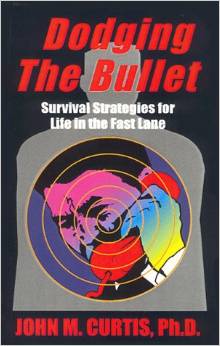Stabbed in the eye, neck and liver by 24-year-old, Calif.-born, New Jersey resident Hadi Matar of Shiite Lebanese descent before delivering talk at New York’s Chautauqua Institute, 75-year-old author Salman Rushdie clings to life on a ventilator in a New Jersey hospital. Eyewitnesses say Matar pounced on Rushdie, punching him before stabbing him several times before a New York State trooper could pull him off. If not for urgent CPR by a doctor in the audience, Rushdie might have died of blood loss. Whether he makes it now is anyone’s guess, reportedly in a medically induced coma recovering from his stab wounds. Rushdie came to fame in 1989 publishing his novel, “Satanic Verses,” drawing condemnation from Iran’s Ayatollah Ruhollah Khomenei, the leader of the 1979 Islamic Revolution. Whatever displeased Khomenei, he declared a fatwa or edict in 1989 calling for Rushdie’s head.
Rushdie, an Kashmir-born Muslim and knighted British citizen, went into a British witness protection program, staying away from public view until, gradually coming out in 2000. Rushdie’s long-awaited appearance at the Chautauqua Institute was interrupted by Matar, who authorities found cell phone evidence that he held sympathies to Iran’s Revolutionary Guard Corps [IRGC]. Looks like Matar was well-aware of Iran’s Al-Quds leader Qasem Soleimani killed by a U.S. predator drone Jan. 2, 2020. Showing that Matar’s attack was no accident, Iran’s extremist publications heaped praised on the New Jersey resident for helping complete Khomenei’s 1989 fatwa for blasphemy against the Prophet Mohammed. Rushdie wasn’t the first attacked under Khomenei’s fatwa. Hitoshi Igarashi, Rushdie’s Japanese translator, was stabbed to death in July 1991. Ettore Capriolo, Rusdie’s Italian translator, was stabbed 1993.
Rushdie’s Norwegian publisher of “Satanic Verses” William Nygaard was shot but wounded in Oslo in 1993. So, it’s nothing new anyone associated with Rushdie “Satanic Verses” was attacked under Ayatollah Khomenei’s order. Research by the mayor of Yroun, Lebanon, Ali Tehife, said Matar’s cell phone showed his sympathies to Iran’s Revolutionary Guard Corps [IRGC[. “A thousand bravos . . . to the brave and dutiful person who attacked the apostate and evil Salman Rushdie in New York,” wrote the Tehran’s hardline Kayhan newspaper. “The hand of the man who tore the neck of God’s enemy must be kissed,” showing, if nothing else the lingering hatred of Rushdie in conservative Shiite Islamic circles. Iran’s former President Mohammed Khatami said in 1989 that Iran no longer supported killing Rushdie. Iran’s Khorasan Daily headline said, “Satan on his way to hell.”
FBI officials have a lot of work to do to find out whether or not Matar was paid by the Iranian government or some group to murder Rushdie. Chautauqua Institute must ask itself with a such a controversial author, why they didn’t have extra security, at least a security guard on stage. It took precious time to tear Matar off Rushdie before the New York State trooper could subdue the assailant. No one from Iran’s Ayatollah Ali Khamenei’s office has responded to the attack. FBI officials are busy trying to figure out whether Matar’s lone-wolf attack was actually orchestrated by the Iranian government or some other group. Iran’s 15th Khordad Foundation, continued to have a $3.3 million reward in 2012 to killing Rushdie. Hardline Vatan Emrooz newspaper said, “knife in Salman Rushdie’s neck.” With so many Shiite extremists calling for Rushdie’s head, you’d think U.S. officials would take security more seriously.
FBI officials have yet to speculate about a possible motive. But with Matar having images on his cell phone of Al-Quds late leader Qassem Soleimani it’s clear he had revenge on his mind. Finding Rushdie was easy to do with Chautauqua Institute publishing its speakers. FBI confirmed that Matar had a valid pass to attend Rushdie’s lecture, meaning that the young extremist tracked Rushdie down. Whether Matar was groomed by the [IRGC] or some other group isn’t yet known. But it’s clear that someone must have helped Matar track down Rushdie to get close enough for the attack. How his knife passed through Chautauqua’s metal detectors is anyone’s guess. Whether Matar avenged the death of Soleimani or carried out Khomenei’s 33-year-old fatwa to kill Rushdie is anyone’s guess. What’s known for sure is that Matar had Soleiman’s picture on his cell phone.
Breathing on a ventilator in a New Jersey hospital, Rushdie might survive Matar’s knife attack with disabling injuries. Knighted by Queen Elizabeth June 16, 2007 for his contribution of literature, Rushdie was condemned by many Islamic leaders, considering it an insult to Islam. Al Qaeda’s late leader Ayman al-Zawahri, killed July 31, 2022, in a U.S. drone strike, called Rushdie an “insult to Islam” in 2007. FBI officials have a lot of work to find any link between Matar and any Islamic group tied to Iran or any other place. Matar’s attack fits lone-wolf terrorism but doesn’t tell the whole story of whatever help he received to know Rushdie and his whereabouts. It’s highly unlikely that a 24-year-old lone wolf terrorist knew anything about Ayatollah’s Ali Khanemei’s 1989 fatwa against Rushdie. Judging by his cell phone evidence of Soleimani, Matar was tipped off by Iranian authorities.
About the Author
John M. Curtis writes politically neutral commentary analyzing spin in national and global news. He’s editor of OnlineColumnist.com and author of Dodging The Bullet and Operation Charisma.



